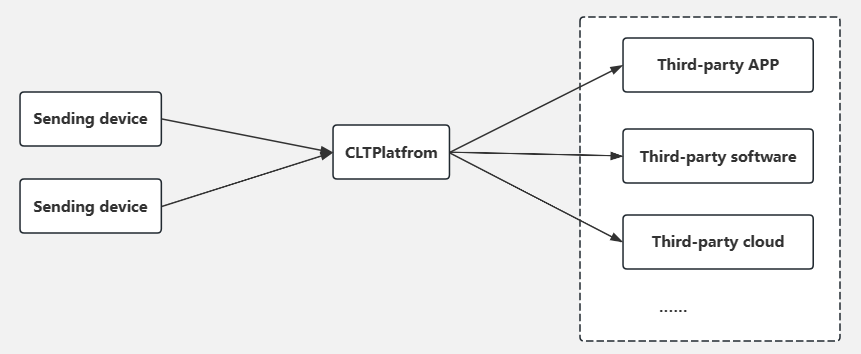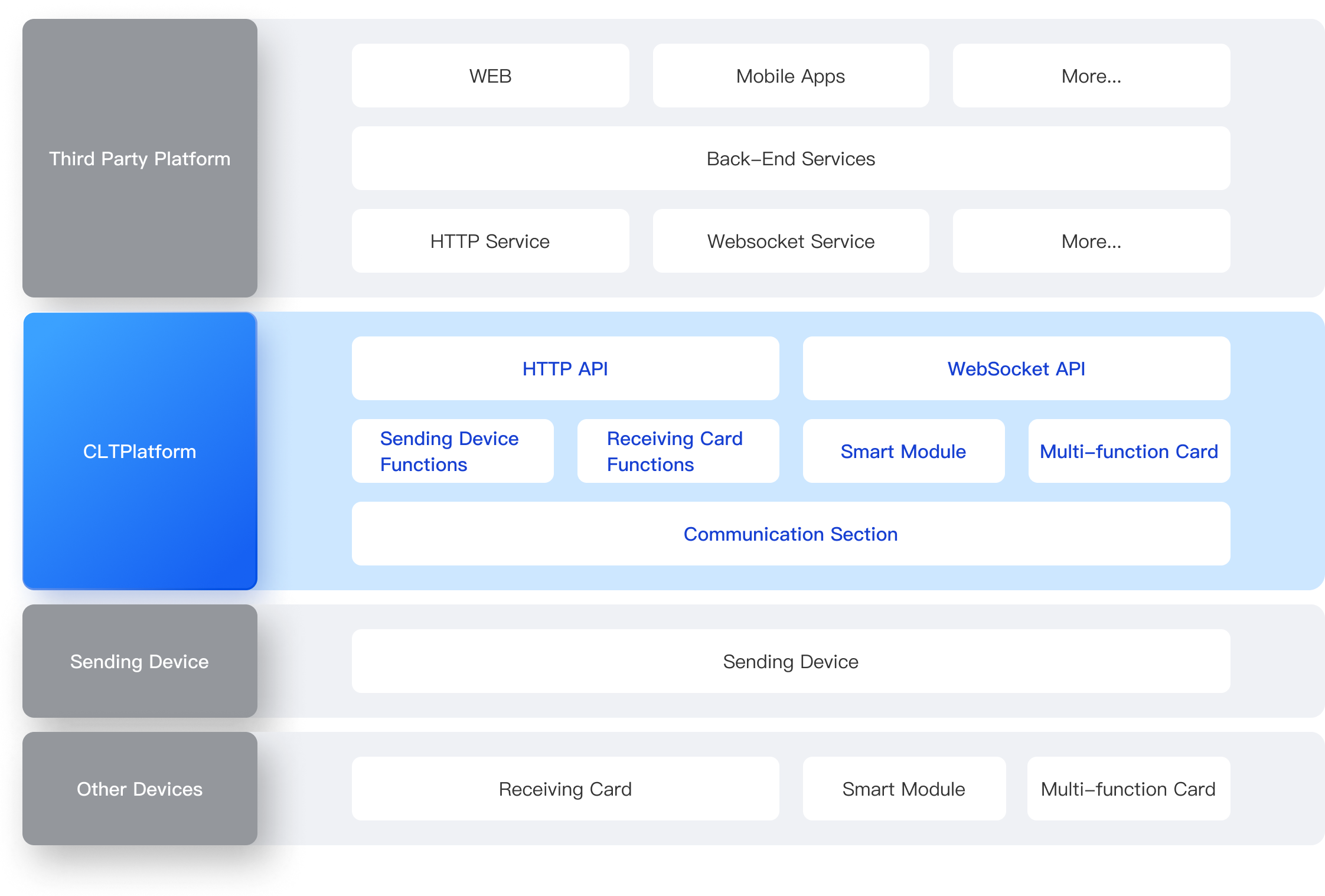# Product Introduction
# Introduction
CLTPlatform mainly uses the industry's common HTTP protocol, developers can carry out secondary business development based on this. From the perspective of the platform, each Colorlight's device has the same functional interface, which is the same on each device, so that developers only need to realize the adaptation once, and there is no need to re-adapt with the release of each new device, indirectly reducing the developer's research and development workload and shortening the online cycle.
The previous development based on the CLTDevice SDK has a large amount of work and high cost, and it also needs to spend a lot of energy on the adaptation of the device function interface, which leads to the slow development progress of the overall scheme. The introduction of CLTPlatform is intended to solve the problem of reinventing the wheel. For developers, they can directly communicate with Colorlight's products through CLTPlatform, so that developers can focus more on the development and implementation of business interfaces.


# Architecture

From the architecture layer, it can be seen that HTTP API are the external interfaces provided by the Colorlight platform, and the third-party platform controls the Carlette device according to the API. It is important to note here that the device cannot be directly connected to a third-party, it needs to be connected to the Colorlight platform first.
The third-party needs to deploy basic services such as HTTP services and open the communication link with the Colorlight platform to develop the function set.
# Noun Explanation
| Noun | Explanation |
|---|---|
| CLTPlatform | Control the services of Colorlight's products. The services must be deployed on the same LAN as the sending device. |
| Processor | Colorlight's video splicer, super processor, professional Processor, sender, and playbox are collectively referred to as sending device in the platform. Connect to the platform directly through USB, or connect to the LAN where the platform resides through a LAN port. |
| Receiving Card | It is a display control card embedded in the LED screen. All receiving cards communicate with the platform through the sending device. |
| Module | Refers to the smallest control unit embedded in the LED screen, and some versions support functions such as storage calibration coefficient, belongs to the receiving card function expansion. All modules communicate with the platform through the receiving card. |
| Multi-function Card | A detection device installed on the link between the sending device and the receiving card. The operation of the card does not affect the screen display and can be used to detect the environment. |
| Device Sets | Refers to a collection of devices controlled by one or multiple (cascaded) sending device. |